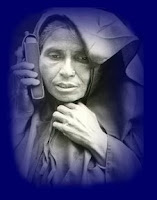 1. Wikinomics By Don Tapscott and Anthony D. Williams2. The Long Tail by Chris Anderson
1. Wikinomics By Don Tapscott and Anthony D. Williams2. The Long Tail by Chris Anderson
These two books in the list are more about the impact of internet on business, but felt that they give one very good insights into how the business will evolve and adapt ....
3. Culture Code by Clotaire RapailleNot something directly linked to marketing or business but essentially with the close link of marketing and culture a must read
 4. The Toyota Way by Jeffrey Likert
4. The Toyota Way by Jeffrey LikertAgain and all time favorite, gives insights into the wroking of Toyota , though there are umpteen
books on Toyota this book has been appreciated by many...
5. Witch Doctors by Mick lethwait and Wooldridge
lethwait and WooldridgeMust be the oldest book in the list, written somewhere in the late 90's, the authors take a critical view of management theories. Management graduates and teachers should read the book as it helps us to rethink on various theories of management which we take as given and don't question them....
6. In Search of Excellence by Tom peters and WatermanNo i was wrong this is the oldest book in the list written in 80's a book which has had a lot of impact on management thinking and has been listed as number one book on management for many years. Though many companies which were studied as being excellent are no longer excellent, the book provides us many insights into the working of organizations which were greta at one point in time...
7. The Black Swan by Nicholas Taleb8. Fooled by Randomness By Nicholsa TalebThese are th two book written by Nicholas taleb, one can listen to many of his podcast's and watch him on
TED. His book black swan was among the top sellers in 2007
9. Freakonomics by Steven D. Levitt and Stephen J. DubnerHas spawned a series of books on economics credits should go to Steven Levitt...
10. The World Is Flat Thomas L. Friedman
Was in the best seller list for a long time , and readers have been captivated by his style of writing which sadly is missing in most of Indian authors...
The good thing about the authors and these books is the fact that most of them have a blog through which they keep updating the readers about their new ideas and how they are progressing on a day-on-day basis. Some of the authors like Chris Anderson wrote the whole book on the blog first and then published it!!!!!!















